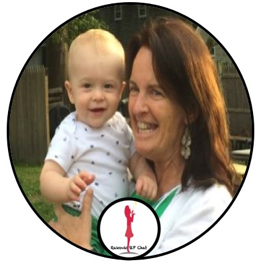It is so exciting when you are part of having a child discover the joys of communication. In my profession as a speech and language pathologist I get to experience this not only with my own children but those that I see as a speech and language pathologist.
Recently I have had the chance to try out a device with a student who had been working with PECs or Picture Exchange System for about two years. She was able to pick the cards up and had learnt how to make the exchange. Her eye contact and joint attention had increased and she had expanded her list of preferred activities.
You could see that she was starting to understand communication. However although exciting we still felt like we were missing something. We work with a phenomenal assistive technology SLP who consults with us and gives us advice on what is new out there. The little girl was very interested in auditory information ( music, toys that had sound), she would respond to verbal cues. It was suggested that we try the ProxPad
We examined the device and paired it up with some of the needs we had:
- We wanted a device that would have auditory feedback: This device did and the quality of the speech is very natural. We have used a sibling’s voice in the programming
- We needed a device that would not require a very precise touch or placement to activate as the student did not always look: This device has two settings one that is touch and one that is proximity. The proximity has worked wonderfully as there is a large space that she only needs to get near to in order to activate the message in the card.
- We needed a light device as this is a student that is mobile. This device is very light and portable and easy to incorporate in many activities.
- We needed a device that we could manipulate what type of information was on the card ( picture, object etc). This device can do all and is very adaptable.
Some of the other great features was the ease that you can program and unprogram. You are able to quickly make the cards that go with the device.
It is so exciting to see this little girl discover her voice. This little girl’s learning style is one in which for most things she has needed repeated practice and support to learn a routine or activity. This device however she quickly learnt and has been able to use it with multiple partners in multiple environments.
No one device is appropriate for every child. Selecting an augmentative device is an art and a process that should not be done lightly. One must examine the child’s language skills, the environment that they will be using the device, their motor abilities, their learning style and what they want to communicate about.
We are on our loaner period but I am excited about seeing a little girl experience the joys of communication.


